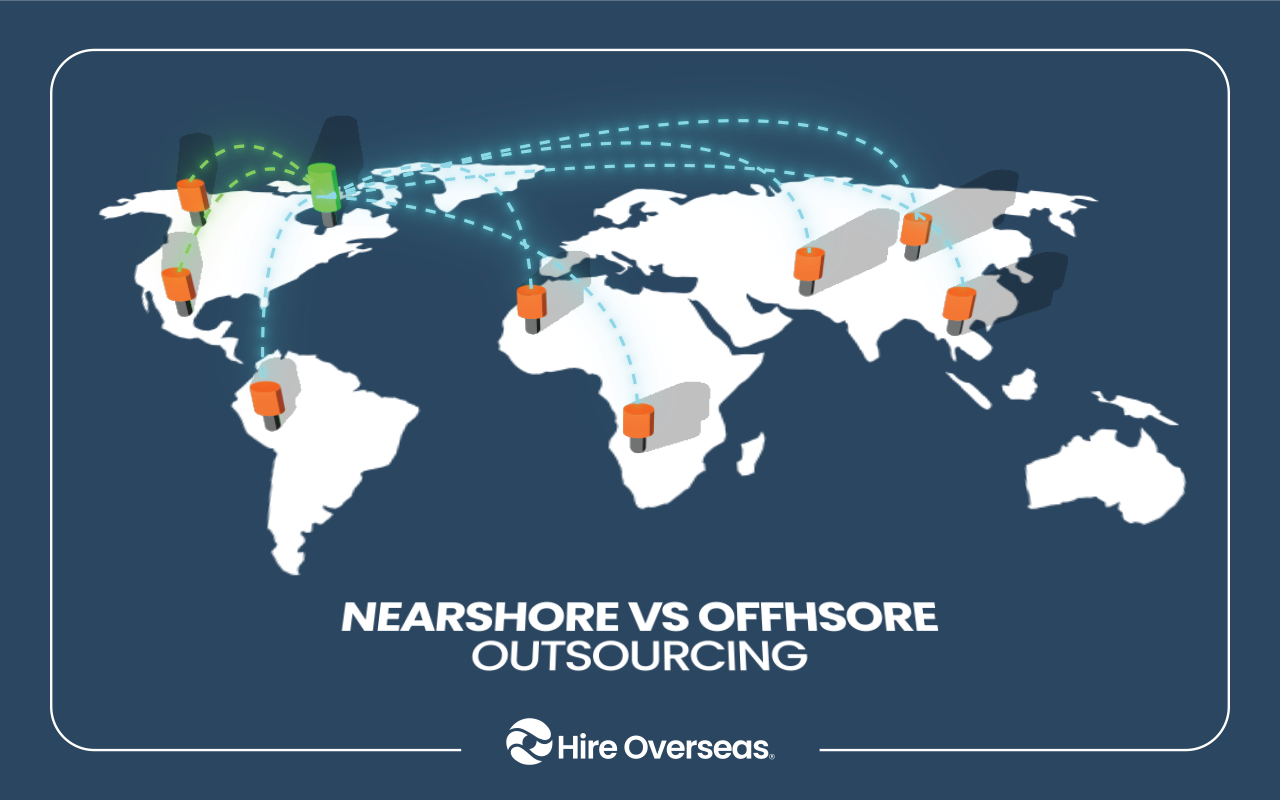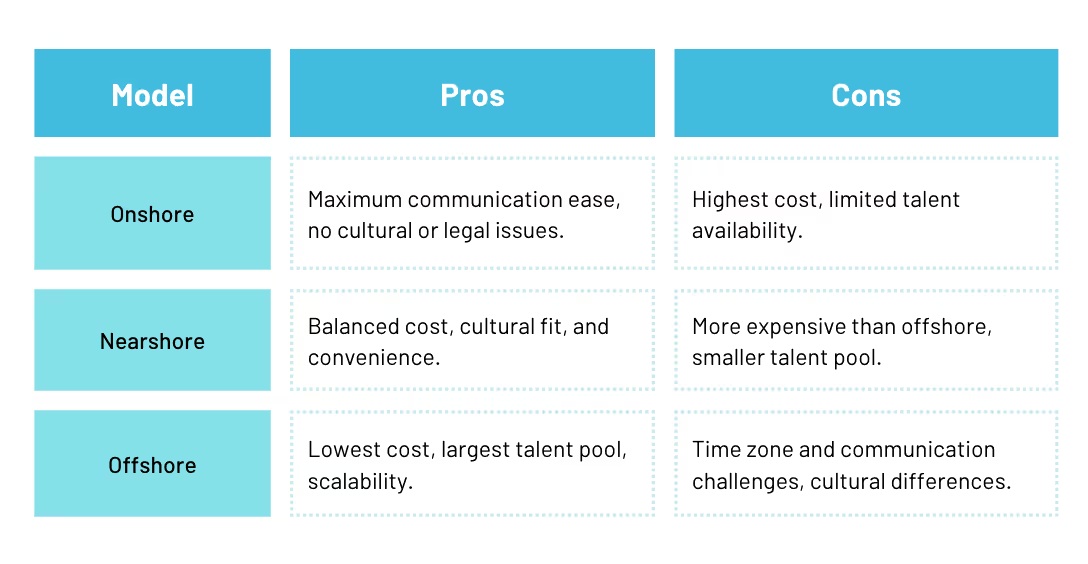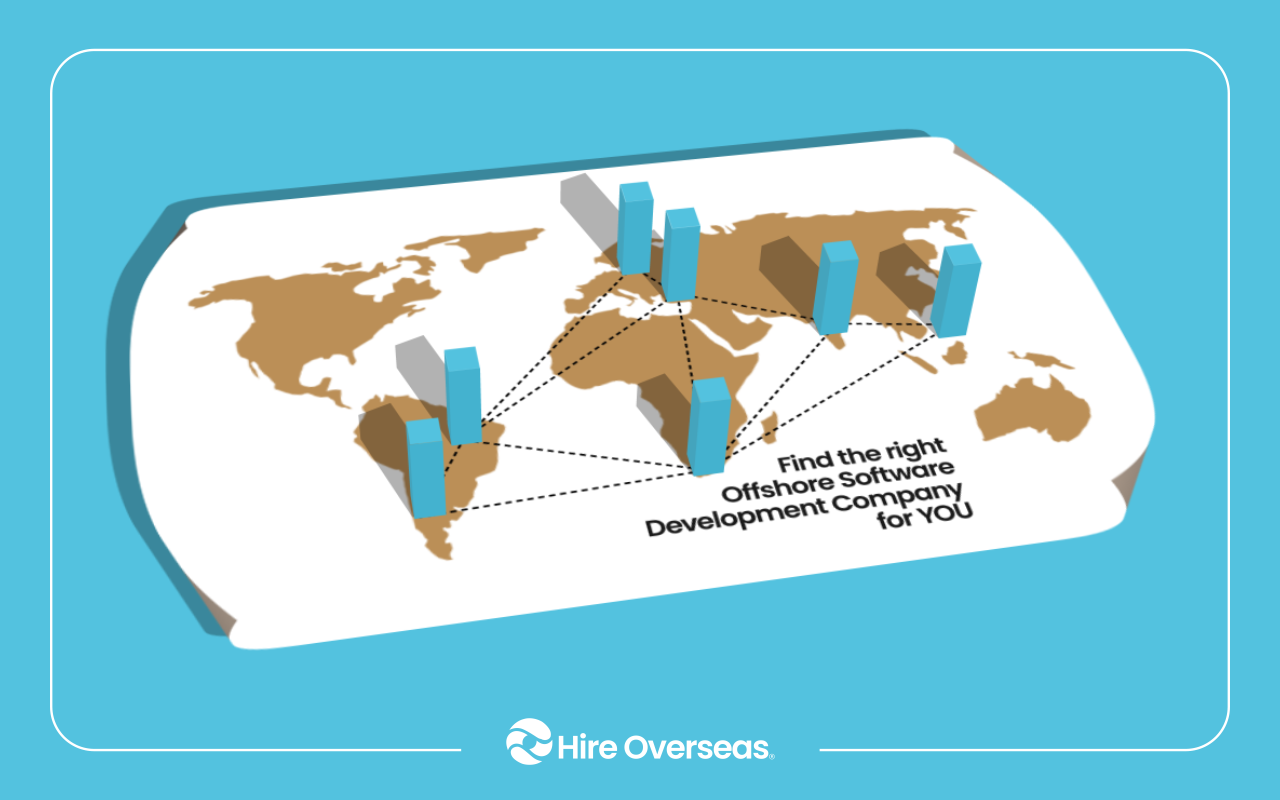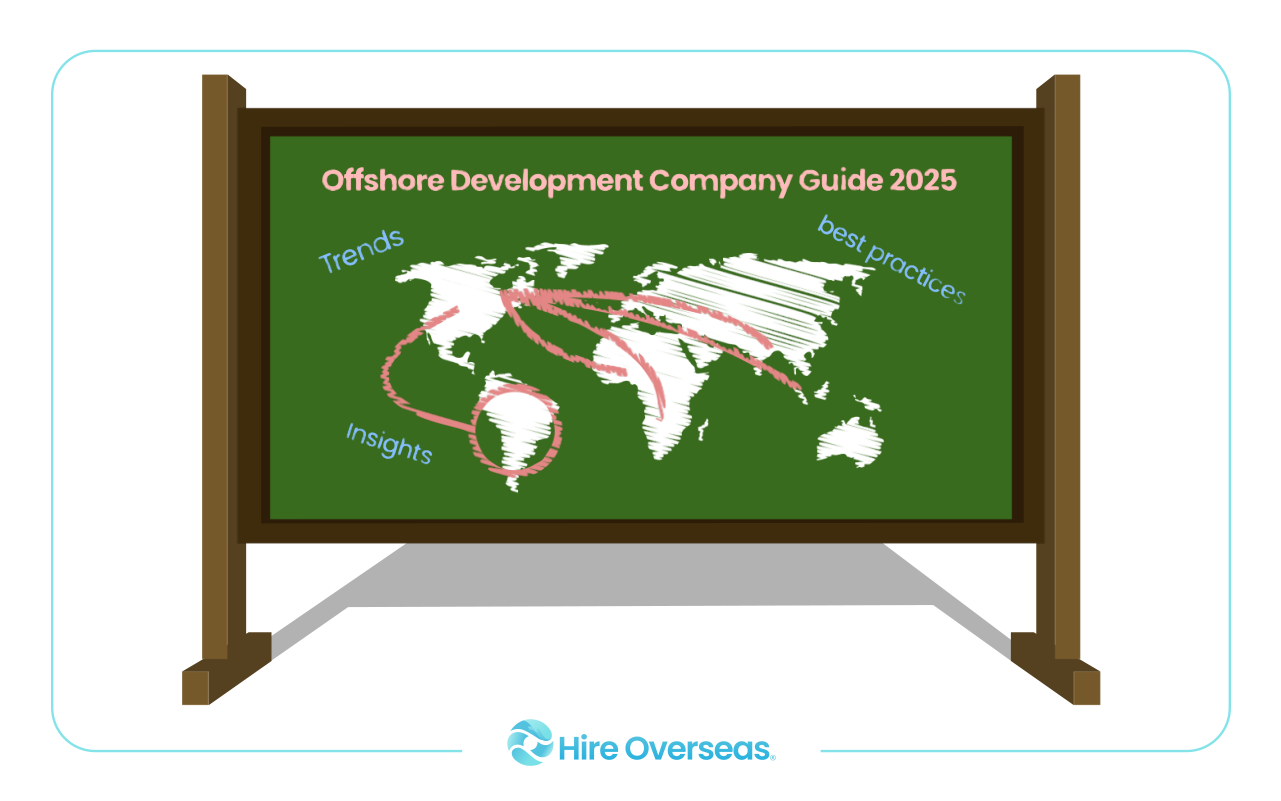Nearshore vs Offshore Outsourcing: Key Differences, Benefits & Best Fit

Outsourcing has evolved from a buzzword into a crucial business strategy. Whether it’s customer support halfway around the world or app development in a neighboring country, companies of all sizes use outsourcing to cut costs and access global talent.
But here’s the catch: not all outsourcing models are the same. The choice between nearshore vs offshore outsourcing, or even onshore, can make or break your project.
This guide explains the differences between these models, their pros and cons, and how to pick the right one for your needs.
What is Nearshore Outsourcing?
Nearshore outsourcing means hiring a team or service provider in a nearby or neighboring country. For example, a U.S. business might work with nearshore developers in Mexico, Colombia, or Costa Rica, while a UK company might choose teams in Eastern Europe. Unlike offshore outsourcing, which can involve teams on the other side of the world, nearshore outsourcing allows businesses to collaborate with partners in similar time zones and with closer cultural alignment.
Some examples of nearshore outsourcing companies include Latin American software firms or Canadian marketing agencies working with U.S. clients.
What is Offshore Outsourcing?
Offshore outsourcing refers to partnering with a team in a distant country—often across continents. Think India, the Philippines, or Vietnam. This offshore outsourcing model is widely used for its cost savings and vast talent pool. It’s especially popular for offshore IT outsourcing, virtual assistant, call centers, and data entry.
Offshore development outsourcing is ideal when you need affordable, scalable solutions for tasks like coding, maintenance, and 24/7 customer support.
Nearshore vs Offshore: Head-to-Head Comparison
Choosing between nearshore vs offshore outsourcing depends on what matters most to your business—cost, communication, cultural alignment, or scalability.
Here’s a clear breakdown:
Advantages of Nearshore Outsourcing
Why do businesses choose nearshore outsourcing? Here are some of the main benefits:
- Time Zone Compatibility: Teams work during similar business hours, improving collaboration.
- Easier Communication: Fewer language and cultural barriers compared to offshore.
- Proximity: Shorter travel distances enable in-person meetings when necessary.
- Faster Response: Teams can handle urgent requests more efficiently than offshore counterparts.
These nearshore outsourcing benefits make it a strong choice for projects that require real-time input, creativity, and cultural nuance.
When to Choose Offshore Outsourcing?
Despite its challenges, offshore outsourcing shines in specific scenarios:
- When budget is the top priority.
- When access to the largest possible talent pool is critical.
- When the work is routine, repeatable, and does not rely heavily on real-time communication.
The offshore IT outsourcing model is especially effective for:
- Software development & testing
- 24/7 customer support
- Data entry and processing tasks
Onshore vs Nearshore vs Offshore: Which Model Works Best?
You might also consider onshore outsourcing, where you hire providers within your own country.
Here’s how the three models compare:

Your choice should depend on factors like project complexity, budget, data security needs, and desired level of oversight.
Making the Right Outsourcing Decision
The right outsourcing model depends on your business goals:
- Onshore if simplicity and full control are paramount.
- Nearshore if you want a balance of affordability, communication ease, and cultural fit.
- Offshore if minimizing cost and accessing the widest talent pool are your priorities.
If you’re ready to explore your options, connect with nearshore and offshore outsourcing companies that align with your vision. At HireOverseas.com, we help you navigate these choices to find the perfect fit.
FAQs About Nearshore & Offshore Outsourcing
What is nearshore outsourcing?
Nearshore outsourcing is hiring a partner in a neighboring country to handle business tasks, combining cost savings with easier communication and oversight.
What are the advantages of nearshore outsourcing?
Advantages include similar time zones, fewer cultural barriers, quicker travel, and better collaboration compared to offshore.
Nearshore vs offshore: which is better?
Nearshore is better for projects requiring real-time communication, creativity, and cultural understanding. Offshore is better when cost savings and scalability are the top priorities.
What are some examples of nearshore outsourcing companies?
Latin American software firms, Canadian creative agencies, or Eastern European IT teams serving nearby Western countries are common examples.
How does offshore outsourcing work?
Offshore outsourcing involves partnering with a team located in a distant country, often chosen for its low labor costs and large talent pool.
Unlock Global Talent with Ease
Hire Overseas streamlines your hiring process from start to finish, connecting you with top global talent.




